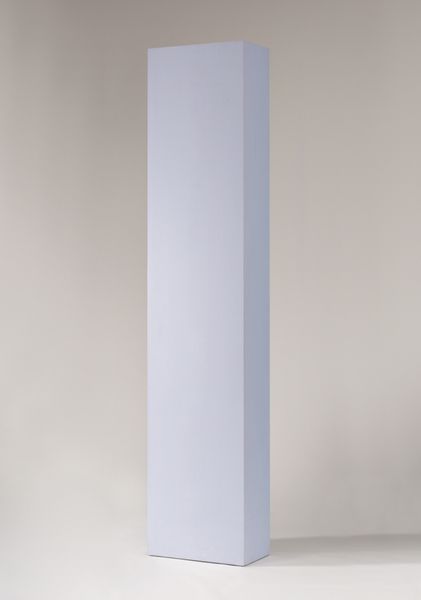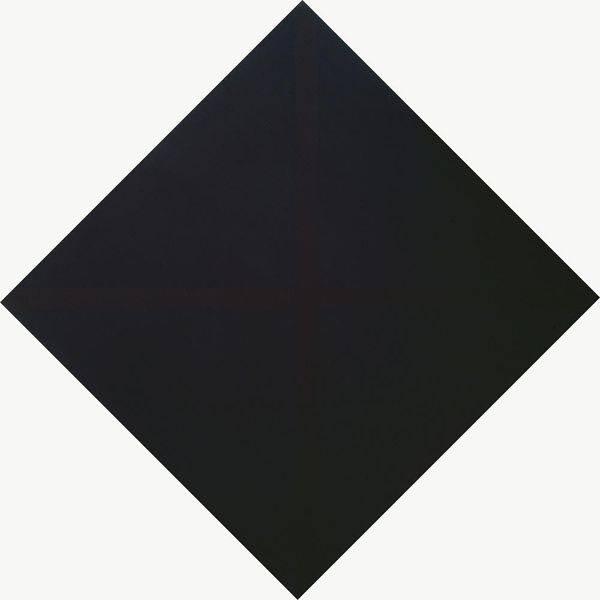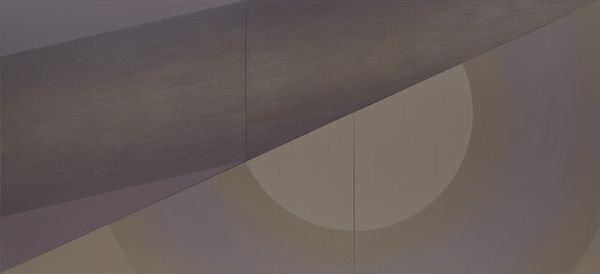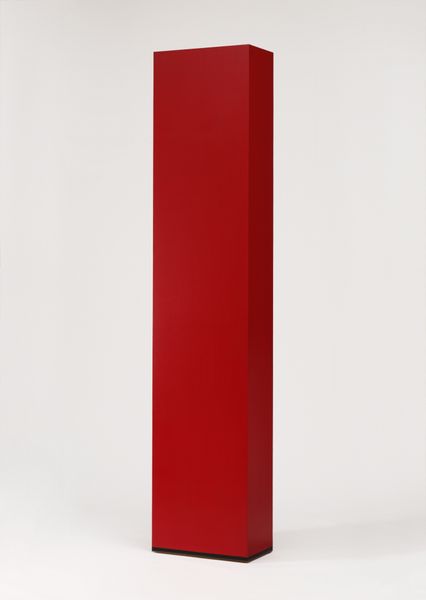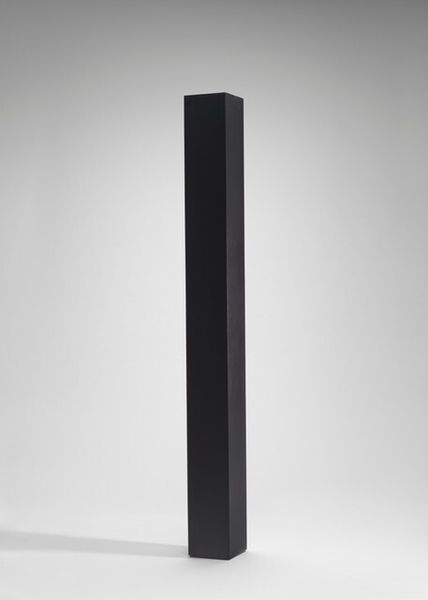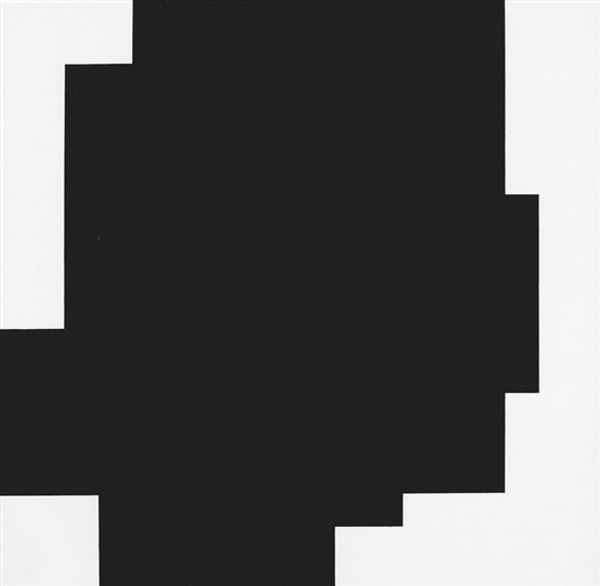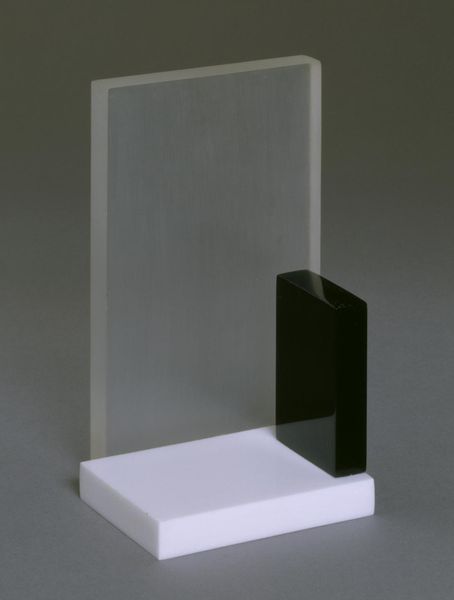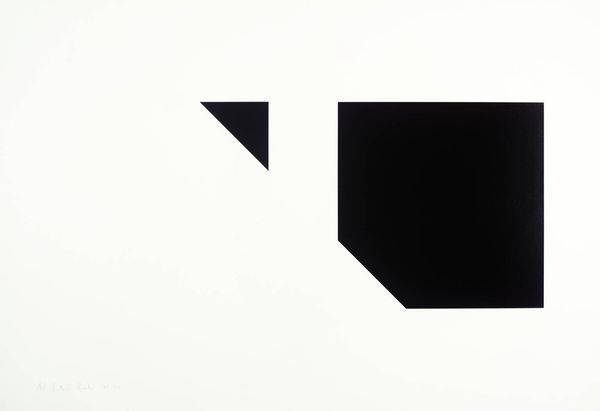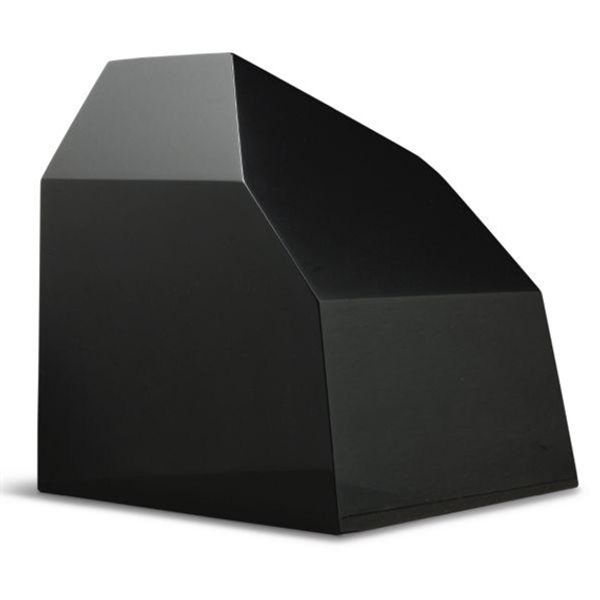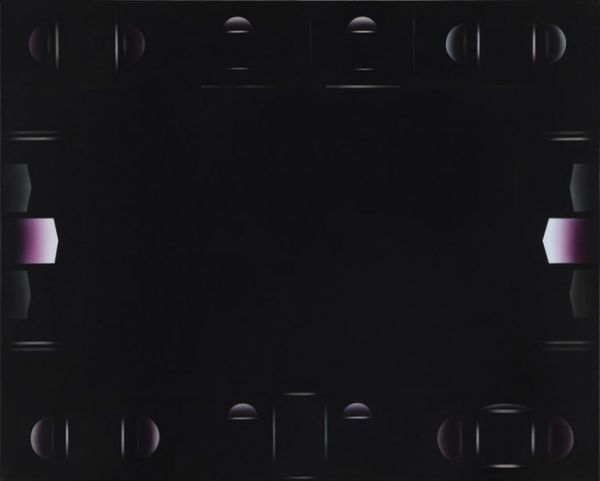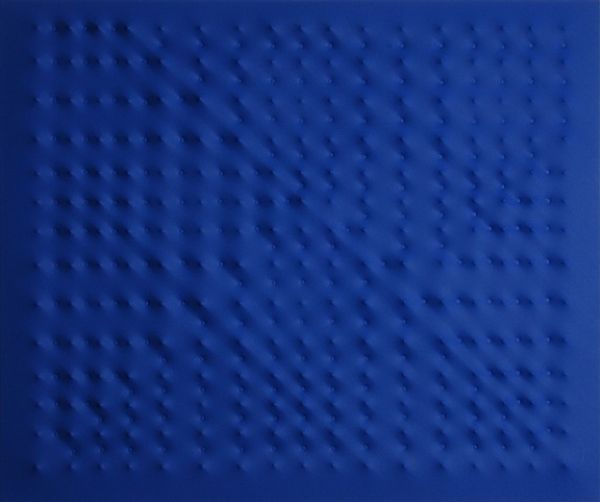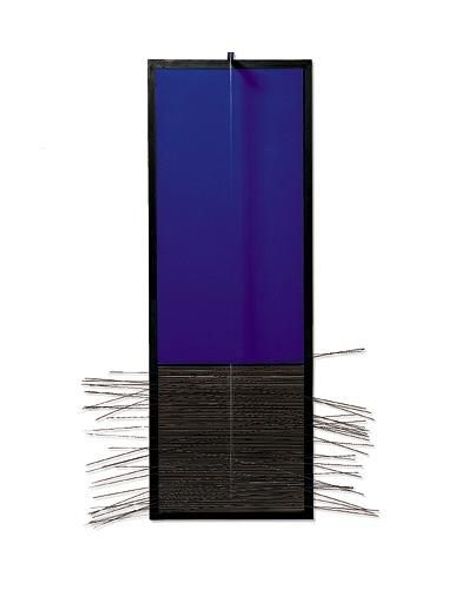
metal, sculpture
#
minimalism
#
metal
#
postminimalism
#
form
#
geometric
#
sculpture
#
abstraction
Copyright: John McCracken,Fair Use
Editor: This is John McCracken’s sculpture *Interval* from 2004, a metal form standing on a plinth, partially split in a half black and half saturated blue surface. It’s remarkably clean and austere, with no obvious representational elements. What can you tell me about this piece? Curator: Well, placing *Interval* within its historical context, it becomes clearer. Think about the Minimalism movement of the 1960s and 70s and its reaction to Abstract Expressionism’s emphasis on the artist’s gesture. Artists sought to remove all traces of subjectivity, and the rise of industrial materials allowed a radical rethinking of artistic production. Do you see any reflection of these artistic developments? Editor: Definitely. There is nothing handmade about it, no obvious texture. It's completely reliant on the industrial sleekness. How does this contribute to a public dialogue, so to speak? Curator: Precisely! The perfectly smooth surfaces, the simple geometry, these choices invite the viewer to focus less on the artist’s hand and more on their own experience of the object in space, creating a democratic viewing encounter in many respects. Moreover, think of how museum settings reinforce certain art-historical narratives, placing certain value and interpretation on the displayed works. Editor: So the museum context essentially validates the object, shaping our reception of what we’re seeing? Curator: Exactly. It highlights questions such as: Who gets to decide what is considered art? Who has access to these institutions, and how do these factors affect how the work is interpreted, then and now? What if the artwork's setting challenges or subverts traditional exhibition conventions? These power dynamics always inform the narrative. Editor: I see your point. It's fascinating to consider the different ways art and its display affect our perceptions. I’ll certainly think differently about minimalism after this. Curator: Indeed, considering *Interval*'s dialogue within Minimalism prompts valuable critical thinking, highlighting the role institutions and historical contexts have in understanding art's meaning and influence.
Comments
No comments
Be the first to comment and join the conversation on the ultimate creative platform.
